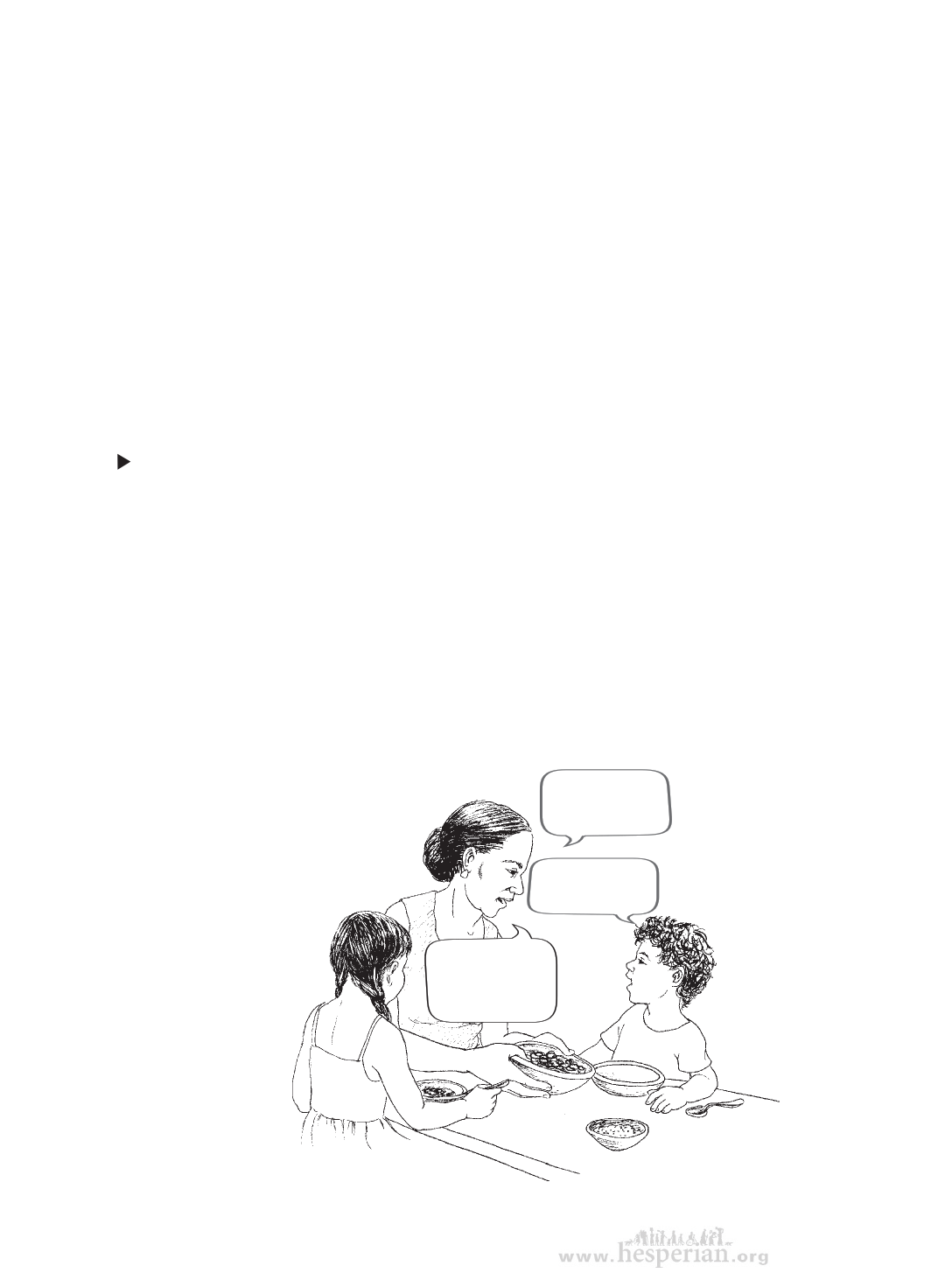
54 c o m m u n i c a t i o n
Common problems when learning to talk
Children who can see get ideas for communicating from watching
people talk. A child who cannot see well misses this and may learn to
talk later than a child who can see. So, when learning to talk, a child
who cannot see well often:
• repeats what others say rather than speaking his own thoughts
• uses words like ‘he,’ ‘she,’ ‘it,’ and ‘you’ (pronouns) incorrectly
• does not turn toward the person speaking
• asks a lot of questions
If your child is having some of these problems, here are some activities
that may help.
To help your child speak his own thoughts
It is natural for young children to repeat what others say. In fact, a
young child should be encouraged to repeat words because this helps
him learn to speak. But a child who cannot see well often continues
repeating words for a long time, rather than learning to say what he is
thinking. This happens because:
• your child may want to keep talking with you but not know enough
words to tell you this.
• he may not understand your words, since he cannot see what you are
talking about.
• he may repeat the words to try to understand what they mean.
If your child repeats what
you say, let him know
you heard him, and then
expand on what he said.
This shows your child
that you are listening
to him. It also shows
him some other
ways to respond.
Do you want
some beans?
Do you want
some beans?
Yes, I want
some beans.
They’re good.
helping children who are blind